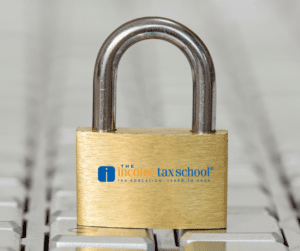Cybersecurity and Cybercrime are two terms you’re going to hear a lot in 2017. That’s because Cybercrime continues to be a growing threat to consumers and businesses. According Verizon’s 2016 Data Breach Investigations Report, “No locale, no industry or organization is bulletproof when it comes to the compromise of data.”
IBM President and CEO Ginni Rometty described cybercrime as “the greatest threat to every profession, every industry, every company in the world.”
If those warnings don’t scare you, here are some stats compiled by the IBM Security Intelligence blog that might.
- More than 29 million records were exposed in 858
 publicized breaches across sectors including financial, government, health care and education.
publicized breaches across sectors including financial, government, health care and education. - One study that surveyed nearly 400 companies who suffered data breaches last year reported that the average cost per breach was $4 million.
- Last year, IDG detected 38 percent more cybersecurity incidents than the year prior.
- Forty-eight percent of data security breaches are caused by acts of malicious intent. Human error or system failure account for the rest.
The increasing cybercriminal activity should have all tax professionals on high alert for the upcoming tax season. The IRS reported a 400 percent surge in phishing and malware incidents during the 2016 tax season. Here’s what you should know for the 2017 tax season to help protect you from data breaches, identity theft, and more.
Know the Scams
As a professional in the industry it’s important to stay on-top of the phishing and malware scams that are out there. It’s also important to relay information to clients as a proactive way to fight identity theft. The IRS regularly sends out email notices as new scams come to light. You can sign-up to receive alerts on the IRS website. You can also bookmark our Tax Scam Round-up blog. We will be updating the blog throughout the year as a way to document and keep track of the newest scams.
IRS Security Campaigns
In an effort to help educate taxpayers and tax preparers, the IRS has launched two campaigns. The Taxes. Security. Together. Campaign and the Protect your Clients; Protect Yourself Campaign. These two campaigns contain important safeguarding tips for taxpayers and tax preparers that you should be aware of. Here are three resources to read up on:
2017 IRS Safeguards
The IRS Security Summit made big strides in identifying and implementing additional taxpayer safeguards for the upcoming 2017 filing season. The emphasis this year is on authentication of legitimate tax filers, information sharing, and cybersecurity. Safeguards you will see this year include:
- W-2 Verification Codes to W-2 Forms (a pilot program)
- New data elements will be collected by the IRS to help improve authentication of the taxpayer and identify possible identity theft scams
- Several “Work Groups” were formed in various industries to help identify and safeguard information. Those groups are: Financial Services Work Group, Information Sharing Work Group, Information Sharing and Analysis Center Work Group (ISAC), and the Strategic Threat Assessment and Response (STAR) Work Group
You can read more about the Security Summit Identity Theft Initiatives here.
Protect Your Client’s Information
Are you ready for the upcoming tax season? Have you followed the security best practices and communicated them to your employees? Getting ready for tax season means making sure systems are in place to protect your client’s information. If you haven’t already done so, check out our Cybersecurity Checklist.
Cybersecurity should be a top priority for taxpayers and tax professionals this year. Make sure you are communicating with clients and employees all season long about the importance of safeguarding information.
source http://www.theincometaxschool.com/blog/cyber-crime-protection/
No comments:
Post a Comment